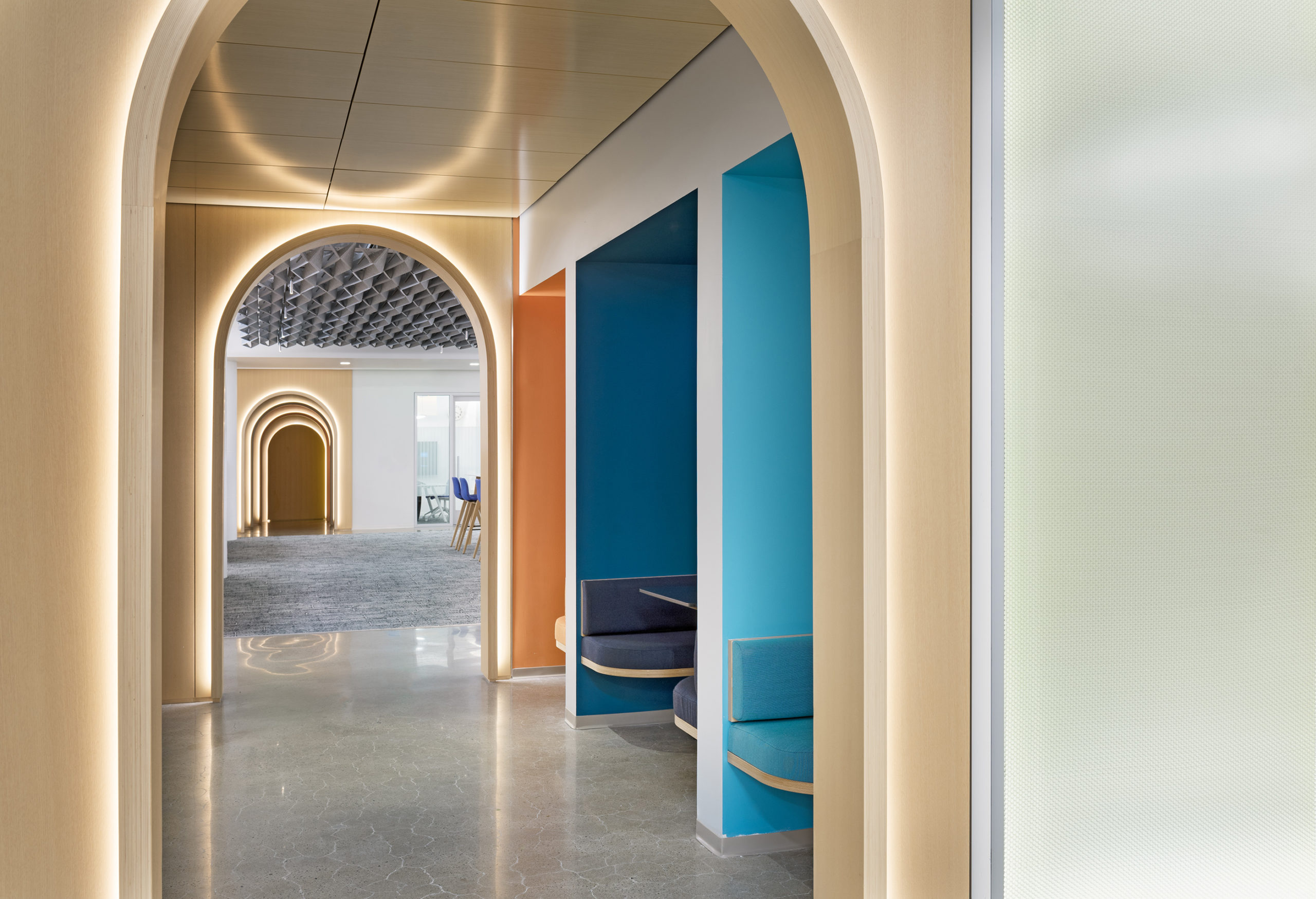From the use of AI in the design of eco-friendly chairs to visualizing data and pushing the limits of parametric architecture, Autodesk is an industry leader in the development of 3D design, engineering, and entertainment software. Designing the California-based company’s latest office would be a dream project for many practices.
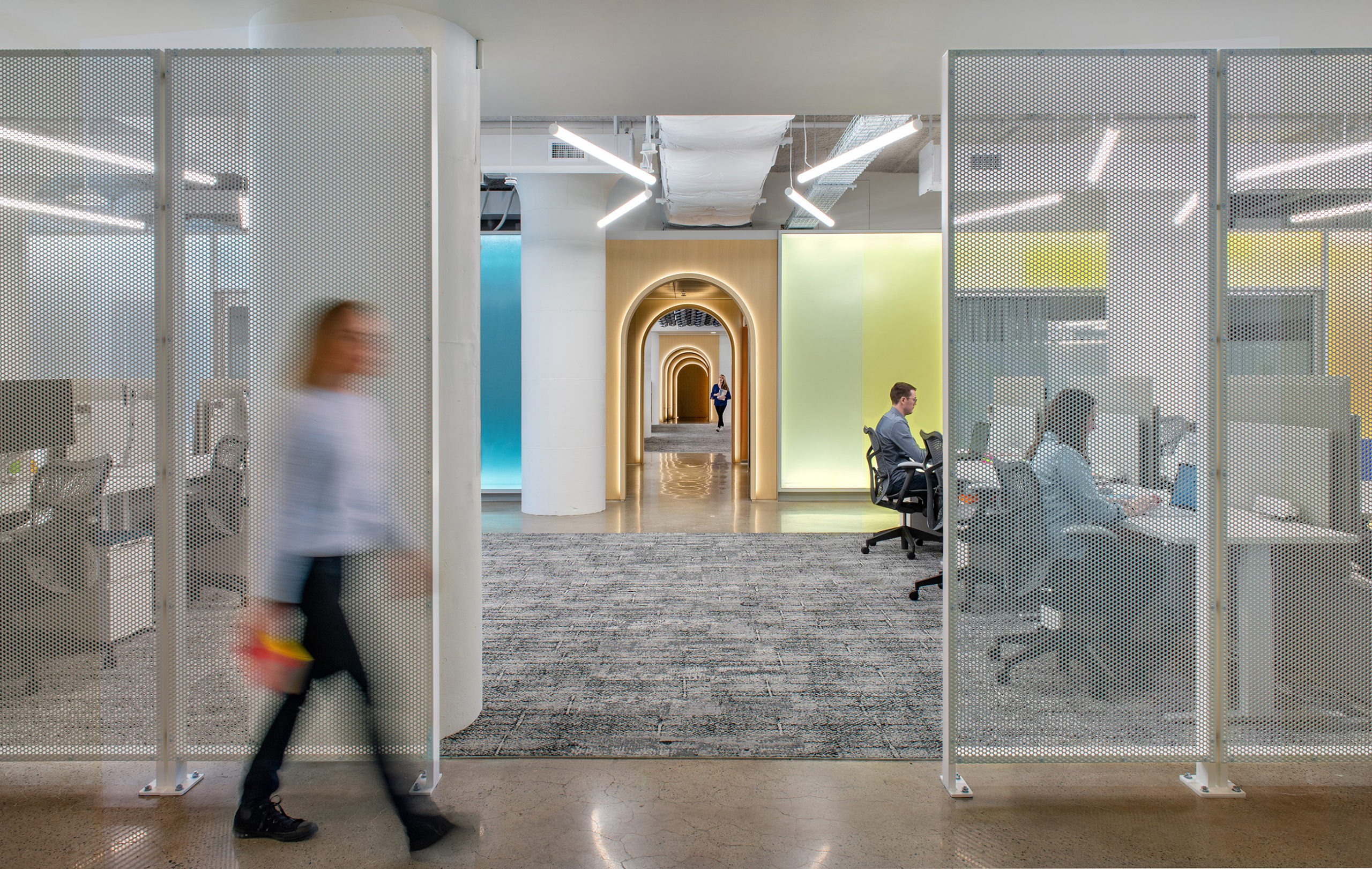
The Boston-based architecture firm Utile was tapped to do just that—not once but twice. When Autodesk’s South Boston Meeting and Event Center (MEC), completed by Utile in 2018, was in need of an expansion, the company called on the self-described research-oriented think tank again.
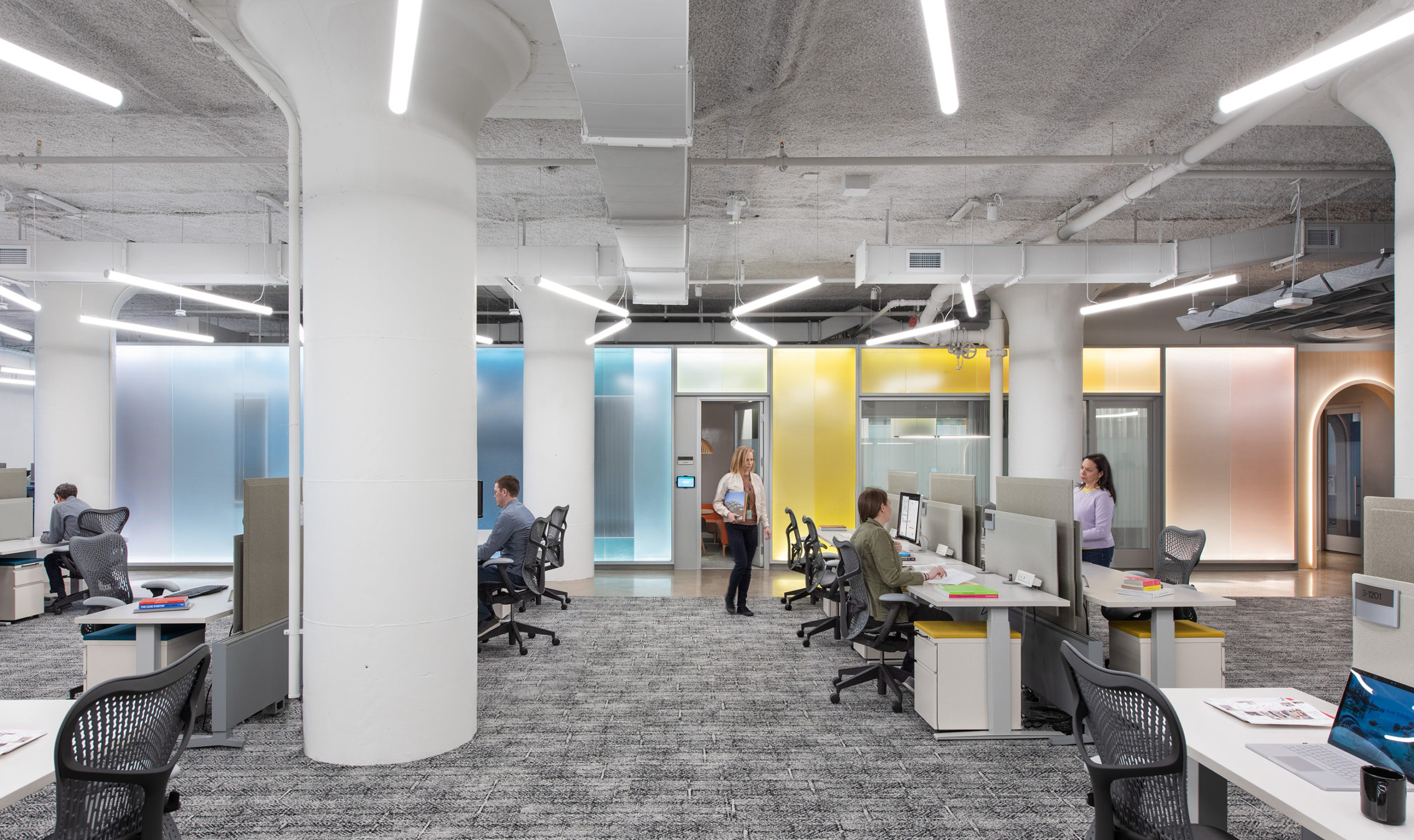
“Utile gained Autodesk’s trust during the design of the adjacent MEC,” Utile associate architect and project lead Ingrid Bengtson explained. “We were given a lot of creative freedom.” The former U.S. army storehouse that was chosen for the extension was already imbued with natural light and floor-through views. The firm highlighted these attributes by introducing a variety of flexible working and meeting spaces. “Our brief was that the space should have a wow factor,” Bengtson added.
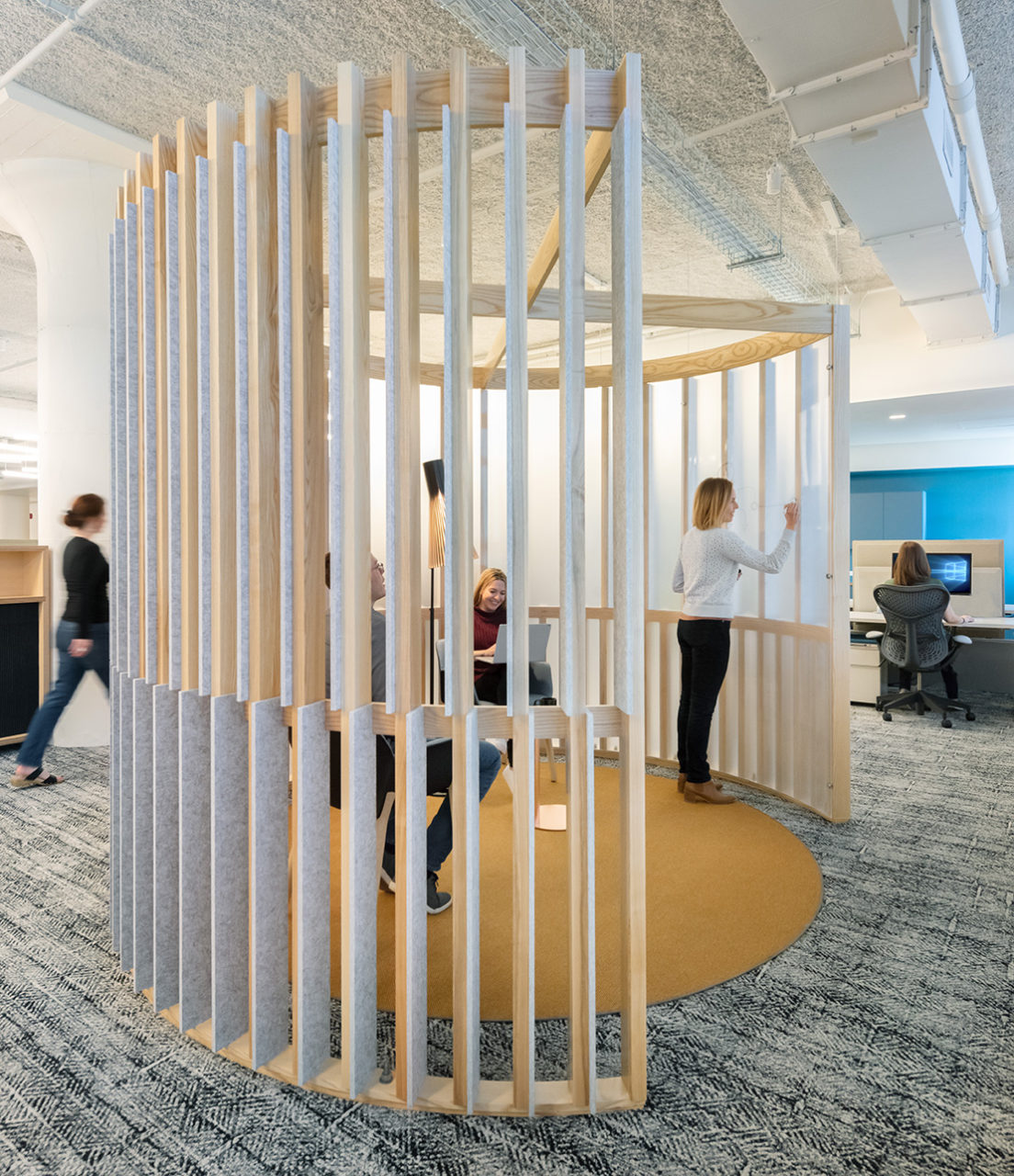
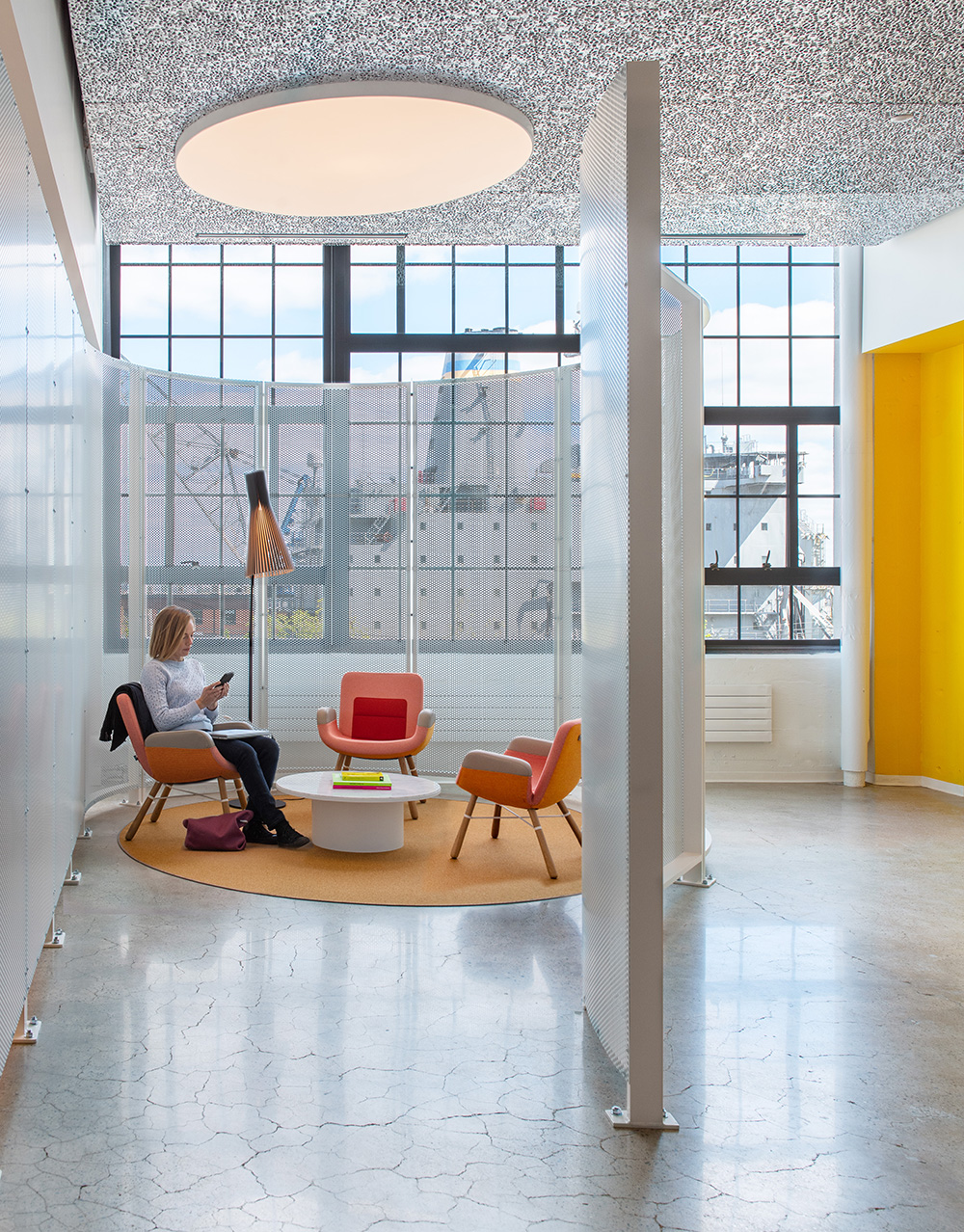
With open-plan layouts no longer the holy grail in office design, Utile embraced the building’s large columns. “We had to be very efficient with the distribution of furniture so that the space could incorporate all aspects of the desired program,” Bengtson said. “We were careful not to create an unyielding and uninviting sea of desks.”


The firm exploited small gaps in the workstation layout to position a series of intimate tentlike rooms. Sectioned off by custom millwork, these pods form an archipelago amid the desk areas. Also breaking up the full-floor workspace is a central enclosure termed the “Glowing Box.” Its enfiladed rooms-within-rooms are clad in an aluminum honeycomb core, a polycarbonate skin that is tinted in a 34-color gradient. This visual effect changes as employees move through the space.

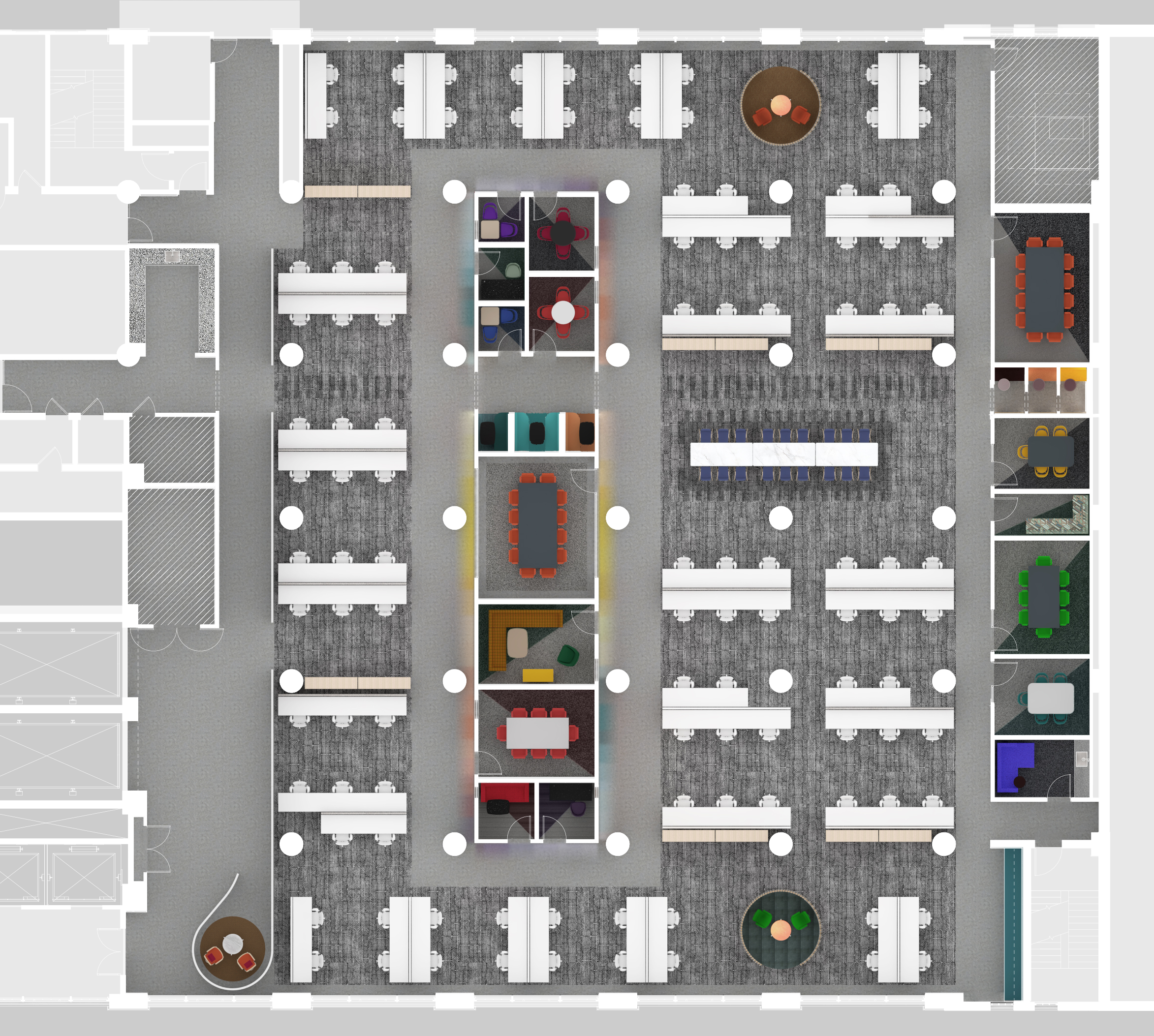
The play with perception continues along the axis that connects the entire length of the storehouse. Composed as a kaleidoscopic arcade of illuminated arches, this central element extends the perceived depth of the space through forced perspective while also containing a number of small lounges. “Standing in the empty shell space at the beginning of the project, we were impressed by the expansiveness of the industrial hypostyle hall,” Bengtson said. “Maintaining a 100-yard view seemed like a great way to highlight the history of the building.”
Header image: Light-permeable collaboration pods line a central arched walkway. (Chuck Choi)
